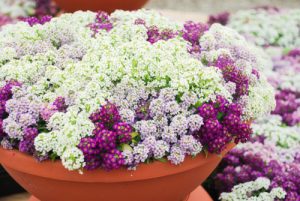All too often we focus on spring and summer as a time for planting. But did you know that you can also plant in winter? In Australia there is no set of rules when it comes to gardening. Our incredibly varied climate makes a garden possible all year round no matter if you live in a cold, tropical or warm area. Today we are going to discuss what to plant in winter!
Why Garden in the Winter?
Winter is actually one of the busiest times of year. It is the perfect time to study the structure of your garden. When areas are bare, thanks to winter, you can really take stock of what’s working and what’s you like in your garden, and what you might want to remove. No matter where you live, you shouldn’t have to wait for spring to have wonderful colourful flowers in your gardens. There are many plants that bloom beautifully during the winter months.
Below are our recommendations of what to plant in winter in each state around Australia!
What to Plant in Melbourne and Tasmania
Generally considered the cold/cooler states of Australia, you might be asking what could survive this cold weather. Melbourne and Tasmania are considered the colder regions in Australia. But even these regions, and some tableland areas still offer beautiful winter flowers some of the best flowers for your winter garden are:
- Alyssum
- Begonia
- Calendula
- Delphinium
- Foxglove
- Geranium
- Grevillea
- Heartsease
- Lobelia
- Pansies
- Snapdragon
- Violets (native)
Alyssum
This beautiful plant produces long lasting masses of tiny pink, white, violent and cream flowers. It is easy to grow and are ideal as a garden border, ground cover, in pots, and in hanging pots. They are a fantastic winter plant and draw both bees and beneficial insects to your garden.
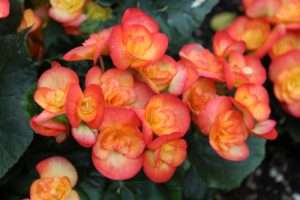
Begonia
Begonias are the perfect houseplants for all homes, especially small units and apartments. These make gorgeous indoor gardens for everyone. Begonias will bring a tropical feeling to your home, transforming your winter into a tropical oasis with their big punch of colour.
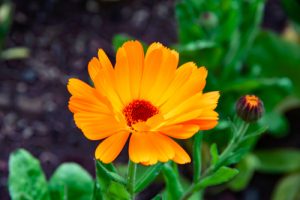
Calendula
The calendula prefers cool temperatures, with flowers lasting longer in filtered sun and shaded areas. And if you keep removing the dead flower heads, the calendula will keep blooming well into winter. In warmer areas the calendula may even stop growing in summer and spring altogether and prefer to grow in winter.
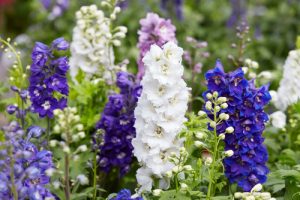
Delphinium
Delphiniums need delicate care, including regular fertilisation when planted – generally in spring – and then during the flowering period. Delphiniums are picky when it comes to extreme differences in temperatures. Give them a space that provides gentle morning sun. They should be deadheaded often in summer and you can expect bountiful blooms. While this might be the final show for these beautiful perennials, the gorgeous flowers are well worth it. Don’t forget to stake taller varieties!
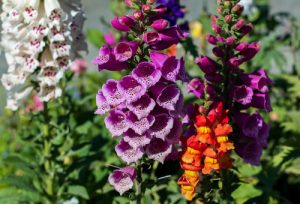
Foxglove
The beautiful, tall and stately foxglove have long been loved in cottage gardens as they not only create vertical interest but also lovely flowers. They can reach 6 feet and come in white, yellow, lavender, pink, purple, and red. To ensure they survive into winter, do not cut off any dead heads. Foxgloves rely on setting their own seed to grow strong new plants next year. Leave the dead heads alone and enjoy the beauty of your foxgloves through the winter. Please remember that foxgloves are poisonous! Keep them away from small children and animals.
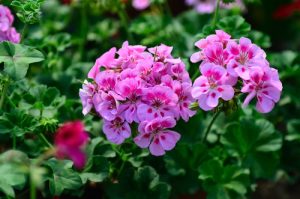
Geranium
Geraniums love light, so ensure to place them in a spot that gets at least 5-6 hours of direct sunlight a day, but sheltered from the afternoon sun. soil needs to be well drained and planted in premium potting mix. They love to be watered regularly but you must leave them to dry between the times you water. Too much water can cause root rot. Remove spent flowers and old leaves to keep the plant looking healthy, cut them back by April so you have beautiful, fresh blooms by winter!
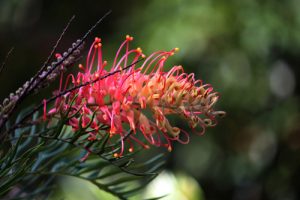
Grevillea
When buying grevilleas for a winter garden you need to be careful. Not all grevilleas are capable to survive cold weather. But plant breeders have worked to create cold tolerant versions of these stunning native plants. Look for the following cold tolerant species:
- Rosmarinifolia
- Alpinia
- Juniperina
- Dwarf Grevillea Fireworks
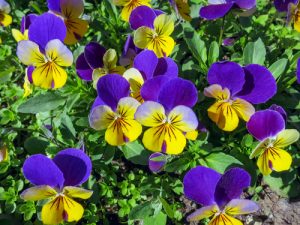
Heartsease
Heartease lives up to its name, the beautiful little heart shaped faces in purple and yellow are best planted in early spring or autumn will have them growing perfectly in time for Winter. As natives of Europe, they prefer a cool climate, so they do best in Melbourne and Tasmania.
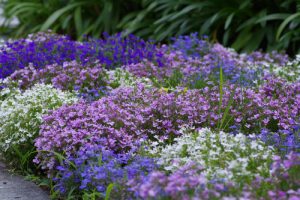
Lobelia
The lobelia prefers fertile, well-drained soil. While it likes cool and cold weather, it can be damaged by frost so be sure to cover it before a frost is due. It blooms a sweet blue and the wonderful, cascading flowers combine beautifully with petunias or other small annuals. They work well on the edge of garden beds.
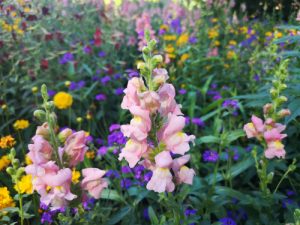
Snapdragon
Snapdragons are gorgeous and a cheery addition to your cottage garden or flower pots, and they come in a wide array of colours. They need a sunny spot and well-drained, premium potting mix soil. Plant them in autumn and late winter/spring. They love the cold but not a severe winter, which is why they’re perfect for Melbourne where winters aren’t as severe as places like the norther hemisphere.
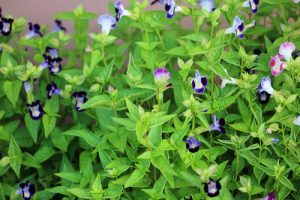
Native Violets
This creeping evergreen perennial comes from eastern Australia, meaning it is used to the taciturn nature of Melbourne’s weather. The plant blooms with purple and white flowers, all year round. The flowers bob above stunning, bright green kidney shaped leaves. This plant can even be used as a lawn substitute! Native violets can be slightly invasive, however, so ensure you keep it well pruned.
What to Plant in Winter for Sydney?
It might surprise you, but there are actually fewer winter plants available than there are in colder regions like Victoria or Tasmania. However, they still have some gorgeous flowering plants, including:
- Grevillea
- Pansies
- Tea Tree

Grevillea
Grevillea and tea tree are both beautiful, flowering, native shrubs. Because they are native species, they are naturally harder, which makes them the perfect choice for areas that might not work for other flowering plants. Tea tree in particular has over 80 stunning varieties to choose from! While grevilleas doesn’t need rich soil in temperate areas. And in these temperate and cold regions, they also bloom with far larger flowers then other regions.
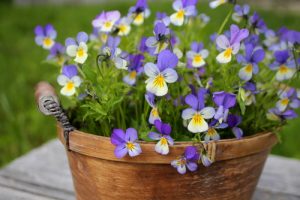
Pansies
Pansies in particular love a cooler climate. We recommend planting them from March through to July. If you plant them any later they will flower in the autumn months. By planting them in March, you will have gorgeous flowers blooming throughout July. In spring they go dormant and usually last only one or two seasons. In warm regions, like Sydney, pansies need protection against the sun. But they still need sunlight of about half a day in order to properly flower!
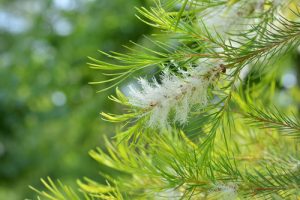
Tea Tree
The tea tree is the delight of the late winter garden. It provides a beautiful burst of colour that bring people back to nurseries to add more of these natives to their gardens. These shrubs are often smothered in masses of small pink, white, or red flowers around delicate, fine foliage.
Adelaide and Perth
With climates similar to Mediterranean countries, and considered the “Mediterranean” of Australian. But Adelaide and Perth still have winter just like everyone else. Some of the beautiful winter flowers that grow well in Adelaide and Perth, as well as surrounding areas. What to plant in winter for Perth and Adeliade include:
- Ageratum
- Alyssum
- Cyclamen
- Forget-Me-Knot
- Lobelia
- Marigold
- Pansy
- Petunia
- Verbena
- Zinnia
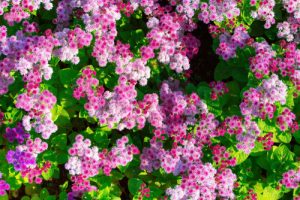
Ageratum
Also known as the floss flower the species originally came from Mexico. The dwarf form has been grown for years around Sydney and seems to grow wherever its roots take ground. It comes in a sof blue colour, with flowers themselves being described as curiously fluffy. This cute little flower blooms all year round but needs pruning to stop it roaming too far.
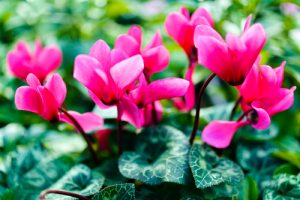
Cyclamen
These charming plants love Mediterranean feel of Perth and Adelaide as the originated from the Mediterranean. They are known for their distinctive nodding flowers and upturned petals. Cyclamen are elegant flowers, long lasting, and come in shades of pink, purple, red and white. They stand up gorgeous patterned leaves making a stunning plant. This fragrant flower blooms beautifully during winter and going dormant during summer.
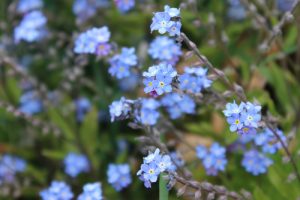
Forget-Me-Knots
Forget-Me-Knots flower in spring and summer in most climates but they also bloom beautifully during winter in Adelaide and Perth. These beautiful, 5-petalled flowers are small and grow in clumps. They prefer damp soil and look amazing round your ponds and water features.
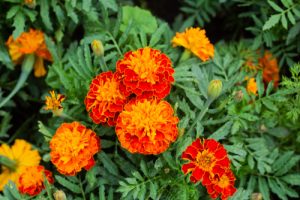
Marigold
With their rich cream, yellow, lemon, gold, orange, and reddish-brown, marigolds are the perfect plants to brighten up any garden. They are excellent massed together in a bold display om their own or they can be mixed stunningly with bright blues or among vegetable gardens. They are exceptionally easy to grow and bloom all year round Australia, but primarily in Perth and Adelaide.
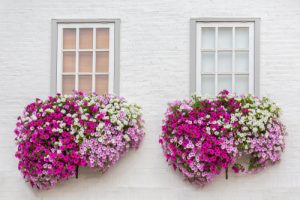
Petunia
Petunias are one of the simplest and most beautiful flowers. They make the perfect addition to any garden around Australia. But for those living in Perth they are the perfect winter flower as they love the warm winter climate, allowing them to flower all year round if you care for them carefully.
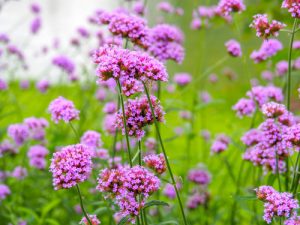
Verbena
These are nice, easy care, fast growing plants. They are perfect for adding an explosion of high impact colour to any garden. This can add masses of vibrant blooms that are ideal for rockeries, hanging baskets, and pots. They are heat, drought, and frost tolerant.
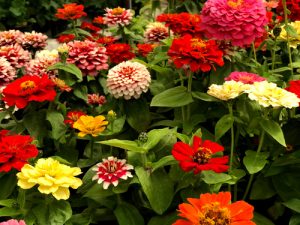
Zinnia
Zinnias come in almost every colour of the rainbow. You can promote more flowering by cutting some blooms so they continue flowering profusely from spring to early winter. They have gorgeous soft, furry light green leaves that vary in width.
Western, Central, and Northern Australia
Dry inland areas, like Central Australia, are far more arid. In the outback area there are plenty of beautiful flowers that grow in this region, even in winter. These include:
- Carnation
- Chrysanthemum
- Geranium
- Kangaroo paw
- Marigold
- Nasturtium
- Snapdragon
- Sunflower
- Zinnia
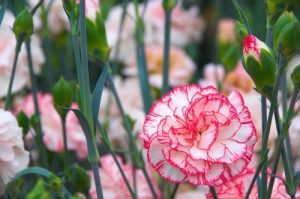
Carnation
This beautiful plant is native to Eurasia and is also exotic to Australia. They last for days when cut from the plant and place in a bouquet. They are a classic cut flower that grow in flowerbeds, as borders, in rock gardens, and in containers. Carnations need at least 5 hours of full sunlight and need very less quantities of water, making them ideal for drier regions of Australia.
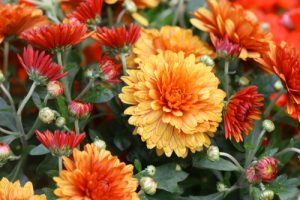
Chrysanthemum
These gorgeous plants are native to east and north-eastern Asia, making them ideal winter plants of northern and western Australia. they grow well in containers, indoors, and in flowerbed borders, in sunny spots. They come in every colour of the rainbow and countless varieties and cultivars. They are easy to grow and low maintenance.
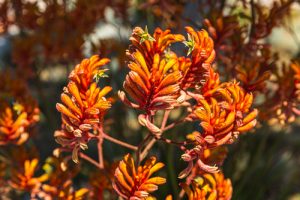
Kangaroo Paw
Kangaroo paw is part of the floral emblem of Western Australia and it grows wild through the landscape. They love the well drained sandy loam soil or acid sand. There are dozens of varieties and while they don’t tolerate frost, they are perfect for the hotter climates of Central and Western Australia. These perennials ensure you have beautiful flowers throughout the year. Plant them during the cooler months in a spot that will get full sun!
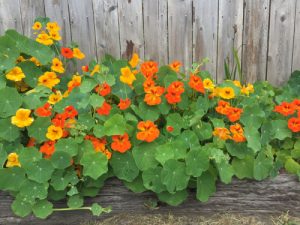
Nasturtium
This fast growing annual from Peru has beautiful umbrella shaped leaves with long stems. The flowers tend to grow in autumn and summer and into winter. The flowers come in shades of orange, yellow, and red. They are trailing and busy with singly and double flowers. They thrive everywhere but cold climates and mountain zones.
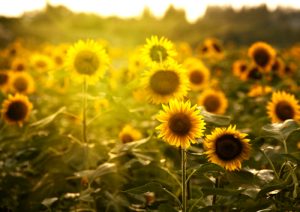
Sunflower
We all know the gorgeous sunny look of the sunflower. These fabulous plants, even when grown from seed, will be blooming within 10 days! Because they are not frost tolerant, these plants will grow and bloom year round, so long as you are not in a frost zone.
Northern Queensland
Northern Queensland is best known for its subtropical whether and stunning rainforests. And along with the tall rainforest trees and shrubbery are the unforgettably beautiful flowers, including:
- Australian Paper Daisies
- Bird of Paradise
- Grevillea Golden Lyre
- Flame Creeper
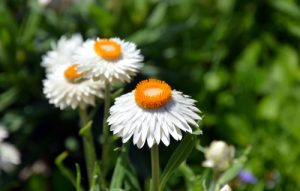
Australian Paper Daisies
Australian paper daises are, obviously, an adorable Australian native. They will add a burst of colour to any garden. It comes in a range of colours, white, red, pink, yellow, and orange. These plants actually do feel like paper. These long-lasting wildflowers are also known as the everlasting daisy as they are extremely low maintenance and are perfect as either fresh or dried arrangement.
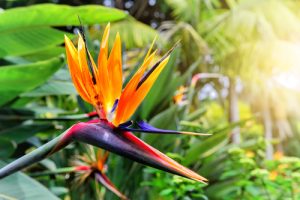
Bird of Paradise
The bird of paradise is a brightly coloured, herbaceous plant that’s native to South Africa, making them perfect for the climates around Northern and Western Australia. it looks like a brightly coloured exotic bird and are designed to be pollinated by birds only. The flowers are long lasting with several blooms produced on each stem. They are perfect for beginner gardeners.

Grevillea Golden Bird
This hybrid species can grow to about 1.5 metres tall and up to3 metres wide. Its magnificent flowers reach up to 25 centimetres and can eve drip with honey! While it might not be a plant for a small garden but it is the perfect addition to make your large garden the envy of the neighbourhood!
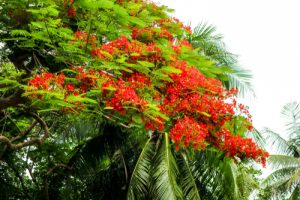
Flame Creeper
Flame Creeper can also grow in more temperate regions and in these locations will flower in spring. But in the subtropical locations it loves the most, it will flower stunningly throughout winter.
Queensland
Queensland, and even portions of Northern Sydney, provide the ideal wet and dry tropical regions are ideal for growing winter plants. These beautiful, flowering plants that thrive during winter include:
- Ageratum
- Carnation
- Geranium
- Impatiens
- Nasturtium
- Wallflower
- Zinnia
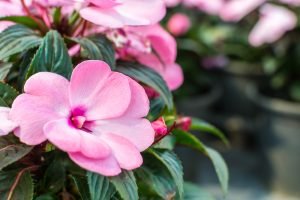
Impatiens
A member of the balsam family, they typically only grow to a height of about 30 centimetres but some grow to a height of 2 metres! You can plant them in your garden our in pots. They also come in an incredible range of colours and patterns. You can either chose one colour or several, whatever fits the look of your garden. Not matter what you choose, these darling plants will give you a riot of colour throughout winter!
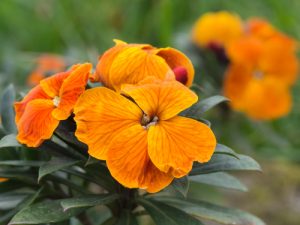
Wallflower
Wallflowers get their name from their original growth habit as they are often found growing on stone walls and rock faces. And traditional they were picked and carried as posies for festivals and fairs. Wallflowers are annuals and grow best in the winter. Prune them back after each flush of flowers.
Of course, this is only a small collection of flowers. It is best to go to your local nursery, like Aumann’s Garden Supplies, to ask them for their invaluable advice on winter flowers. The specialists at Aumann’s can also tell you where to place your winter plants, what soil condition each plant needs, and more. They can also suggest the best flowers, vegetables, and what to plant in winter!
Winter Vegetables for Your Vegetable Garden
Having a vegetable garden will definitely serve you well during the cooler months. Winter vegetables are frequently enjoyed by many. Vegetable and herb seeds are hardy and resilient to cold climates. Nitrogen and organic matter are essential for rich and nourishing soil, seed trays can also be of great use. Fruit trees, especially native fruit trees will also be able to endure the cooler months as will many varieties of herb seeds.
Growing Winter Vegetables like Brussels Sprouts Cauliflower Broccoli Broad Beans and Spring Onions are a Must
There are many winter vegetables that can be grown and enjoyed. Broad beans, spring onions, Brussel sprouts and a wide variety of leafy greens will be key components of any veggie garden. People often eat warm soups, stews and casserole dishes in winter, so having varieties like broad beans, spring onions, leafy greens and Brussel sprouts in your veggie garden makes perfect sense. Above all, winter vegetables are low maintenance and easy to grow.


